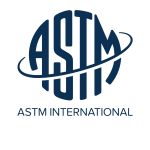Article by Jeri Massengill, CEO
During the Week of October 22, hundreds of environmental professionals, attorneys, regulators, lenders and other stakeholders met in Washington DC to work on new and existing ASTM standards. We also held out-reach and brain-storming sessions to determine how ASTM can work with U.S. EPA to help address the multiple challenges with PFAS contamination.
As many of you due diligence professionals know, the E1527-13 Phase I ESA Standard is currently under review and revision. Since this is such a big effort, the Phase I ESA Task Group breaks into focus groups that each work on a specific part of the standard, then bring suggested changes to the full Task Group for discussion. Over the next 18 months, suggested revisions will be debated and discussed, then balloted three or four times until ASTM members eventually reach consensus on all the changes. A list of some of the focus areas we are currently addressing is below.
- Revision of environmental database names and categories
- Revision of suggested Table of Contents
- Revisions to Limitations/Data Gaps language
- Revision of reasonable time to acquire data
- Address non-liquid PCBs and Diffuse Anthropogenic Pollution
- Adjoining vs. adjacent terminology/definitions
- REC definition revisions and examples
- HREC/CREC simplified definitions
- Revise and strengthen search methodology language for AULs
- Phase I report shelf-life
- Site visit documentation
- Update and strengthen historical property research language
- Business Environmental Risk – New definition
- Clarify the meaning of “de minimis”
- Add continuing obligations appendix
- Revise Findings and Conclusions section and create new “Findings” definition
If you want to get involved or want more information about ASTM, please reach out to me at jerim@historicalinfo.com.
![]() Jeri Massengill, CEO – Historical Information Gatherers and ASTM E50.02 Subcommittee Chair
Jeri Massengill, CEO – Historical Information Gatherers and ASTM E50.02 Subcommittee Chair

 This focused 1-day course for commercial real estate professionals, environmental consultants and engineers covers the ASTM Phase I Environmental Site Assessment Process (E1527). You will gain an understanding of the landowner liability protections to CERCLA, how the standard is used in commercial real estate transactions, and how the standard and related regulations affect the way you do business.
This focused 1-day course for commercial real estate professionals, environmental consultants and engineers covers the ASTM Phase I Environmental Site Assessment Process (E1527). You will gain an understanding of the landowner liability protections to CERCLA, how the standard is used in commercial real estate transactions, and how the standard and related regulations affect the way you do business.


 Having spent most of my career working for consulting firms in various business development and marketing roles, it has been an interesting year having the opportunity to meet so many consultants throughout the country in my role as Director of Business Development for HIG.
Having spent most of my career working for consulting firms in various business development and marketing roles, it has been an interesting year having the opportunity to meet so many consultants throughout the country in my role as Director of Business Development for HIG.